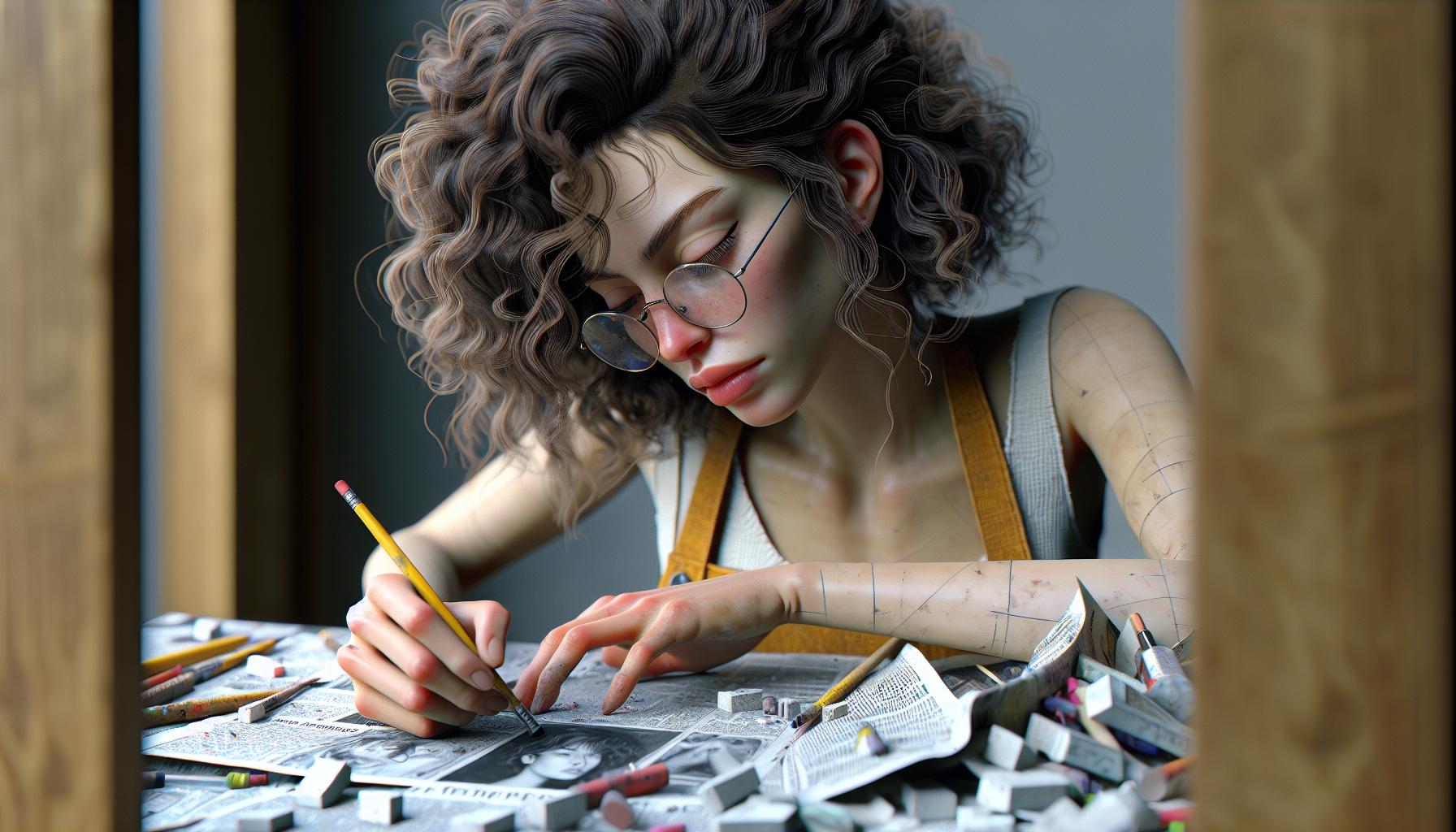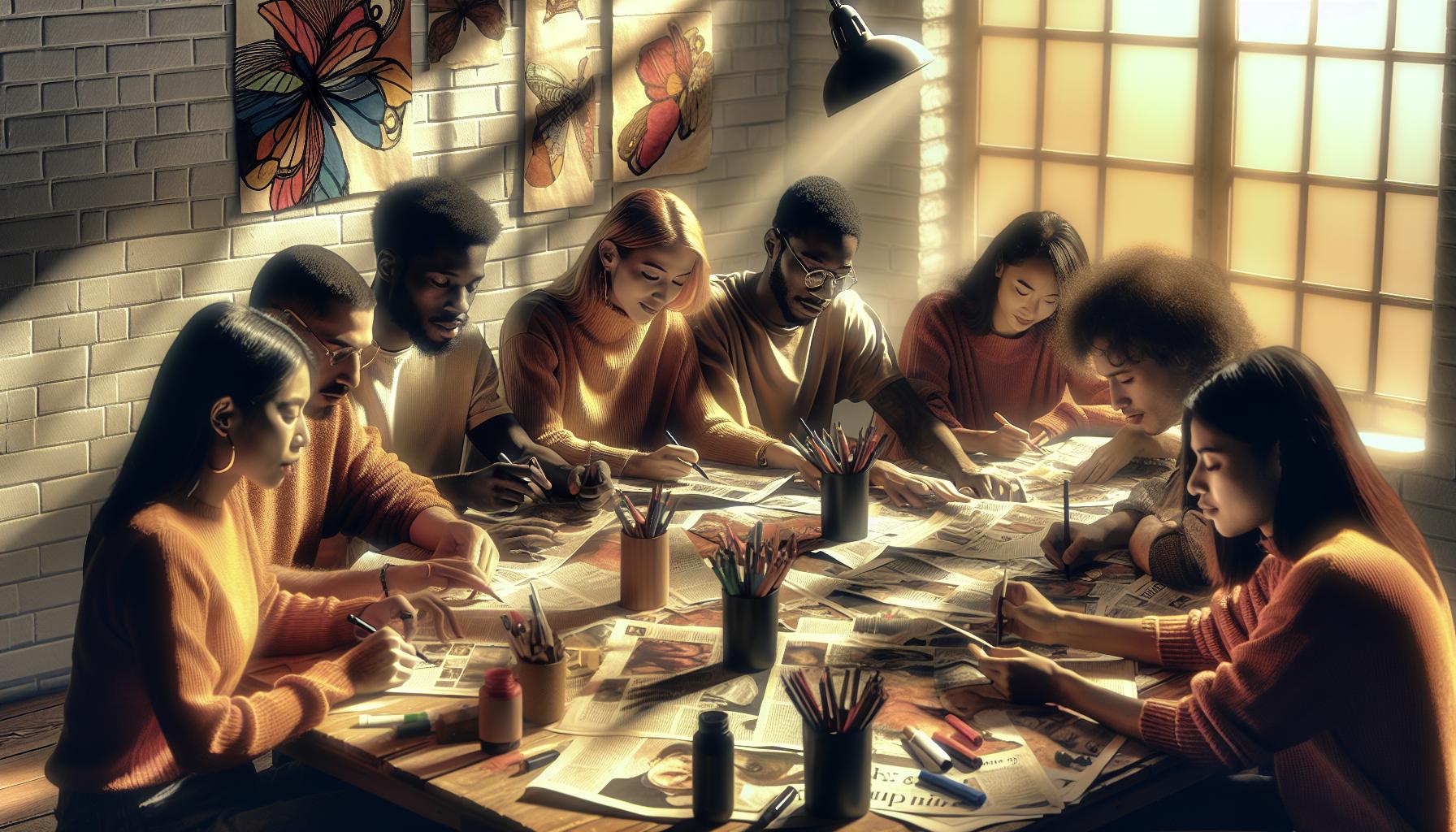Blackout poetry transforms ordinary text into extraordinary art with just a few strokes of a marker. This unique form of creative expression lets anyone become a poet by selectively revealing words from existing text while concealing others to create something entirely new and meaningful.
What started as a creative writing exercise has evolved into a powerful artistic movement that’s taken social media by storm. From newspaper articles and old book pages to vintage magazines these pieces prove that sometimes less truly is more. Artists and writers worldwide have embraced this form of found poetry creating stunning visual pieces that combine the power of words with dramatic artistic elements.
What Is Blackout Poetry: Understanding the Art Form
Blackout poetry transforms existing text into new poems by obscuring unwanted words, leaving behind carefully selected phrases that create meaning. This artistic technique combines visual elements with linguistic creativity to produce unique compositions.
Origins and History of Blackout Poetry
Blackout poetry emerged in the 1760s when poets experimented with newspaper clippings to create found poetry. Artist Tom Phillips popularized the modern form in 1966 with his work “A Humument,” where he modified Victorian novel pages into artistic compositions. The technique gained widespread recognition in 2010 when Austin Kleon published “Newspaper Blackout,” a collection of poems created from The New York Times articles. Social media platforms like Instagram accelerated its growth, with artists sharing their blackout poetry pieces using hashtags like #blackoutpoetry, accumulating over 500,000 posts.
Essential Materials and Tools
Creating blackout poetry requires specific materials for optimal results:
Primary Materials:
- Text sources (newspapers, books, magazines)
- Black markers (permanent markers, felt-tip pens)
- White paper for practice layouts
- Pencils for initial word selection
Optional Tools:
- Colored markers for artistic variations
- Craft knives for precise cuts
- Ruler for straight lines
- Scanner or camera for digital preservation
The ideal marker produces solid coverage without bleeding through the page. Text sources with 300-400 words per page offer adequate material for poem creation. Quality paper prevents ink seepage and maintains the artwork’s integrity.
Creating Meaning Through Erasure

Blackout poetry transforms existing text into new narratives through strategic word selection and erasure. The process requires careful consideration of both source material and word choice to create meaningful compositions.
Finding Source Material
Text selection forms the foundation of compelling blackout poetry. Newspapers provide current events with diverse vocabulary, while vintage books offer rich descriptive language. Literary magazines contain concentrated language with poetic elements such as metaphors, alliteration, and imagery. Online articles present contemporary topics with modern terminology. Dense text passages work best, offering more word combinations to discover hidden meanings. Source materials with varied sentence structures create opportunities for unexpected connections between words.
Selecting Words and Themes
Word selection begins with identifying anchor words that carry strong emotional resonance. Reading the text multiple times reveals potential themes: love, nature, loss, hope, or transformation. Connected words create narrative threads through prepositions, articles, and conjunctions. Theme development emerges by linking related concepts across different lines of text. Poets scan for verbs that suggest action or movement, nouns that evoke concrete images, and adjectives that add sensory details. The final selection typically includes 10-15 words that work together to express a complete thought or emotion.
Famous Examples of Blackout Poetry
Blackout poetry’s most celebrated practitioners have transformed the medium through distinctive approaches. These artists showcase unique methods of redaction while creating powerful narratives from existing texts.
Austin Kleon’s Newspaper Poems
Austin Kleon revolutionized blackout poetry through his collection “Newspaper Blackout” in 2010. His technique involves selecting words from The New York Times articles using a black marker to create stark contrasts. Kleon’s poems often address modern life themes through minimalist compositions that retain 10-15 words from entire news articles. His Instagram account features over 1,000 newspaper blackout poems, garnering 250,000+ followers. Notable pieces include “The Future” created from a technology section article expressing optimism through carefully selected phrases.
Mary Ruefle’s Erasure Work
Mary Ruefle’s erasure poetry transforms Victorian-era texts into contemporary art pieces. Her book “A Little White Shadow” presents 65 pages of erased text using white correction fluid. Ruefle’s technique preserves original page layouts while revealing hidden meanings in 19th-century documents. Her most recognized piece “Moon” emerged from a medical textbook, leaving visible only words that create a lunar narrative. The Vermont College of Fine Arts displays her collection of 200 erasure works, highlighting her influence on the medium’s development.
Visual Styles and Techniques
Blackout poetry employs diverse visual techniques to create striking compositions. Each method transforms text into unique artistic expressions while maintaining the core practice of selective word preservation.
Traditional Black Rectangle Method
The classic rectangular blackout technique forms the foundation of erasure poetry. Artists apply solid black markers to create precise geometric shapes around selected words, leaving clean white text against dark backgrounds. This method creates a stark contrast between preserved and obscured text, emphasizing chosen words through clean lines and sharp angles. The rectangular approach appears in publications like Austin Kleon’s “Newspaper Blackout,” where uniform black blocks create a minimalist aesthetic. Professional artists use archival-quality markers to ensure lasting coverage while maintaining paper integrity.
Creative Artistic Approaches
Artists incorporate varied visual elements to enhance their blackout poetry. Watercolor washes create ethereal backgrounds while colored markers establish thematic connections between words. Illustrative elements emerge through cloud shapes, organic curves, abstract patterns or decorative borders surrounding the preserved text. Artists like Tom Phillips integrate intricate drawings that weave through revealed words in “A Humument.” Digital creators use photo editing software to layer images beneath text or apply texture effects. Instagram features innovative techniques including gradient fades, geometric designs or nature-inspired motifs that transform poems into multimedia artworks.
Digital Blackout Poetry Examples
Digital blackout poetry transforms traditional erasure techniques through digital tools and platforms. The evolution of this art form spans social media channels and digital creation software.
Social Media Poetry Projects
Instagram features prominent digital blackout poetry projects that showcase innovative approaches. The account @makeblackoutpoetry displays curated collections of digital erasures created using photo editing apps and digital markers. Pinterest boards titled “Digital Blackout Poetry” contain over 10,000 examples of text transformed through digital manipulation. Twitter poets use screenshot tools to create erasure poems from trending tweets, news articles and digital texts.
Notable digital projects include:
- @erasurebot: An automated Twitter account generating random erasure poems from classic literature
- #digitalblackout: A collection of 5,000+ pieces created using Adobe Photoshop and Procreate
- The Lost Text Project: A Tumblr archive featuring 300 digital erasure poems from vintage e-books
- BlackoutBot.com: An interactive website allowing users to create digital blackout poetry from news headlines
- Snapseed for mobile photo editing
- Canva’s blackout poetry templates
- Adobe Creative Suite for professional designs
- Procreate’s digital brush tools
Conclusion
Blackout poetry has evolved from a simple writing exercise into a powerful artistic movement that continues to captivate creators worldwide. Its blend of visual artistry and linguistic creativity offers endless possibilities for self-expression whether through traditional methods or digital platforms.
As social media platforms expand and digital tools become more sophisticated the future of blackout poetry looks promising. Artists and writers keep pushing boundaries experimenting with new techniques and reaching wider audiences through their unique interpretations of this versatile art form.
This creative practice proves that sometimes the most impactful messages come not from what we add but from what we choose to remove. The art of selective elimination transforms existing text into something entirely new revealing hidden meanings and unexpected beauty in the process.

